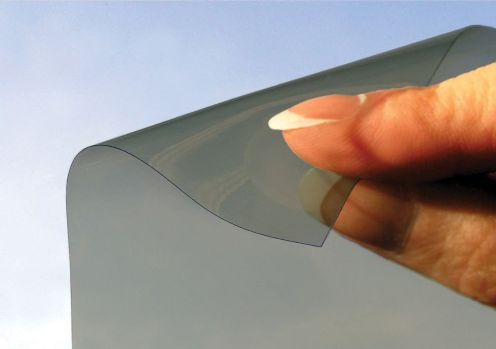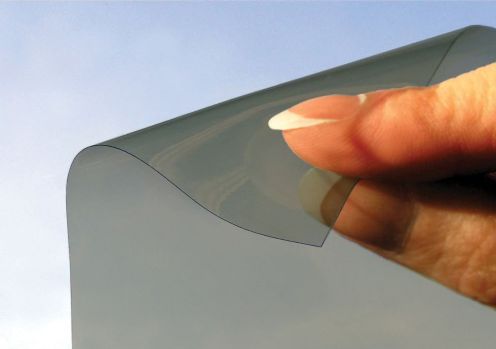Send your question to Umbra!
Q. Dear Umbra,
I have noticed window film applications available at local home improvement stores that claim additional insulation qualities when used, in addition to a sleek look when compared to window blinds. In comparison to the standard winter window applications you can buy to help with drafty windows, but that look less than stellar when applied, does this window film hold its own or fare better/worse. Is this a way to cheaply add extra insulation to single-paned windows, and does it do well in both winter and summer?
Rob B.
Louisville, Ky.
A. Dearest Rob,
The do-it-yourself low-emissivity window films help with the drawbacks of natural light — I read that on a sales website. I do vaguely remember a drawback or two to natural light, but sun has stayed away from my home biome so long that if it ever reappears it is welcome to run rampant over my moldy furniture.
 Slim shadies?Home DepotThe films you see in the overwhelming aisles are a version of the low-e coatings applied as part of the glazing of certain new windows. Low-e film is coated with metal, or metal oxide. The coating blocks solar energy from entering your home if the film faces the sun, or traps heat inside your home if it faces the heat. Low-e coating that faces out at the sun also is blocking almost all UV rays from entering your home and degrading your furnishings. Sundry other films reduce glare and increase privacy; I suppose these are the ones you are comparing to window blinds. As you shop, be careful to read the specifications about transmittance of visible light. You may still want to see clearly out of your window rather than have a strong tint.
Slim shadies?Home DepotThe films you see in the overwhelming aisles are a version of the low-e coatings applied as part of the glazing of certain new windows. Low-e film is coated with metal, or metal oxide. The coating blocks solar energy from entering your home if the film faces the sun, or traps heat inside your home if it faces the heat. Low-e coating that faces out at the sun also is blocking almost all UV rays from entering your home and degrading your furnishings. Sundry other films reduce glare and increase privacy; I suppose these are the ones you are comparing to window blinds. As you shop, be careful to read the specifications about transmittance of visible light. You may still want to see clearly out of your window rather than have a strong tint.
Low-e films do sound great. They are applied to the glass section of your window, so they don’t solve draftiness or wind whistling through the cracks. What they are doing is stopping the thermal conduction of heat through the glass. (Check out my earlier guide to vexing window issues.)
Low-e films should last about 10-15 years, can save you up to 10 percent of your electric bill, and can be applied without too much trouble on a small window but should be professionally smoothed on a larger window.
Of course, because films are heat transfer-related, there are all sorts of numbers and climate-related decisions to make. The Florida Solar Energy Center clearly explains how to crunch the numbers (SHGC and VT values, you know) and choose a window film that will work for your home, window orientation, and needs. It may be just the answer for your budget and your climate.
Warmly,
Umbra




